使用Python进行Ping测试的操作指南
目录
- 前言
- 安装python
- 使用ping3库进行Ping测试
- 基本用法
- 高级用法
- 错误处理
- 实战:构建一个Ping测试工具
- 工具的实现
- 完整代码
- 扩展功能
- 使用多线程进行并发Ping测试
- 生成Ping测试报告
前言
在网络工程中,Ping测试是一种常用的网络诊断工具,用于检查网络连接的可达性和响应时间。Ping测试通过向目标主机发送ICMP(Internet Control Message Protocol)请求包,然后等待目标主机返回响应包,从而测量网络的延迟和丢包情况。随着Python编程语言的广泛应用,越来越多的网络工程师开始使用Python进行自动化网络测试和管理任务。本篇文章将详细介绍如何使用Python进行Ping测试,适合网工初学者。
安装Python
首先,确保你的计算机上已安装Python。可以通过以下命令检查Python版本:
python --version
如果未安装Python,可以从Python官方网站https://www.python.org/downloads下载并安装。
在Python中,有多个库可以用来进行Ping测试,其中ping3库是一个简单易用的选择。可以通过pip安装ping3库:
pip install ping3
确保你的网络环境允许发送ICMP请求。某些操作系统或网络环境可能会限制ICMP流量,这需要相应的权限或配置。
使用ping3库进行Ping测试
基本用法
ping3库提供了一个简单的函数ping,可以用来发送Ping请求并返回响应时间。以下是一个基本示例:
from ping3 import ping
response_time = ping('baidu.com')
print(f'Response time: {response_time} seconds')
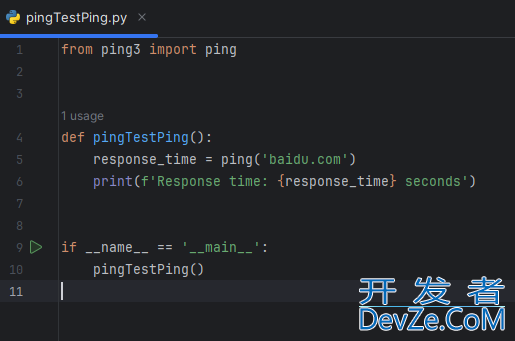
这个示例中,我们向baidu.com发送了一个Ping请求,并打印了响应时间。如果目标主机不可达,ping函数会返回None。
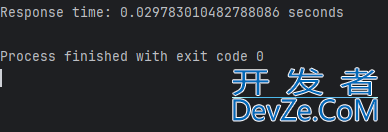
高级用法
ping3库还提供了其他一些功能,例如指定超时时间、数据包大小等。以下是一些高级用法示例:
指定超时时间
可以通过timeout参数指定Ping请求的超时时间(秒):
response_time = ping('baidu.com', timeout=2)
print(f'Response time: {response_time} seconds')
指定数据包大小
可以通过size参数指定Ping请求的数据包大小(字节):
response_time = ping('baidu.com', size=64)
print(f'Response time: {response_time} seconds')
进行多次Ping测试
可以使用循环进行多次Ping测试,以获取更多的网络性能数据:
for i in range(5):
respandroidonse_time = ping('baidu.com')
print(f'Ping {i + 1}: {response_time} seconds')
错误处理
在实际网络环境中,Ping请求可能会失败或超时,因此需要进行错误处理。ping3库在目标主机不可达或请求超时时会抛出异常,可以使用try-except块进行处理:
from ping3 import ping, PingError
try:
response_time = ping('baidu.com', timeout=2)
if response_time is None:
print('Target is unreachable.')
else:
print(f'Response time: {response_time} seconds')
except PingError as e:
print(f'Ping failed: {e}')
实战:构建一个Ping测试工具
接下来,我们将构建一个简单的Ping测试工具,具备以下功能:
从用户输入获取目标主机执行多次Ping测试计算并显示平均响应时间、最大响应时间、最小响应时间和丢包率
工具的实现
1. 获取用户输入
首先,编写代码从用户输入获取目标主机:
target = input('Enter the target host (e.g., baidu.com): ')
2. 执行多次Ping测试
使用循环进行多次Ping测试,并记录响应时间和失败次数:
from ping3 import ping
num_tests = 10
response_times = []
failures = 0
for i in range(num_tests):
response_time = ping(target, timeout=2)
if response_time is None:
failures += 1
print(f'Ping {i + 1}: Request timed out.')
else:
response_times.append(response_time)
print(f'Ping {i + 1}: {response_time} seconds')
3. 计算并显示统计数据
最后,计算并显示平均响应时间、最大响应时间、最小响应时间和丢包率:
if response_times:
avg_response_time = sum(response_times) / len(response_times)
max_response_time = max(response_times)
min_response_time = min(response_times)
packet_loss = (failures / num_tests) * 100
print(f'\nAverage response time: {avg_response_time:.2f} seconds')
print(f'Maximum response time: {max_response_time:.2f} seconds')
print(f'Minimum response time: {min_response_time:.2f} seconds')
print(f'Packet loss: {packet_loss:.2f}%')
else:
print('All requests timed out.')
完整代码
将上述步骤整合成一个完整的Python脚本:
from ping3 import ping, PingError
def main():
target = input('Enter the target host (e.g., baidu.com): ')
num_tests = 10
response_times = []
failures = 0
for i in range(num_tests):
try:
response_time = ping(target, timeout=2)
if response_time is None:
failures += 1
print(f'Ping {i + 1}: Request timed out.')
else:
response_times.append(response_time)
print(f'Ping {i + 1}: {response_time} seconds')
except PingError as e:
failures += 1
print(f'Ping {i + 1} failed: {e}')
if response_times:
avg_response_time = sum(response_times) / len(response_times)
max_response_time = max(response_times)
min_response_time = min(response_times)
packet_loss = (failures / num_tests) * 100
print(f'\nAverage response time: {avg_response_time:.2f} seconds')
print(f'Maximum response time: {max_response_time:.2f} seconds')
print(f'Minimum response time: {min_response_time:.2f} seconds')
print(f'Packet loss: {packet_loss:.2f}%')
else:
print('All requests timed out.')
if __name__ == '__main__':
main()
扩展功能
使用多线程进行并发Ping测试
为了提高Ping测试的效率,可以使用多线程进行并发Ping测试。Python的threading模块可以帮助实现这一点。
以下是使用多线程进行并发Ping测试的示例:
import threading
from ping3 import ping
def ping_host(target, results, index):
response_time = ping(target, timeout=2python)
results[index] = response_time
def main():
target = input('Enter the target host (e.g., baidu.com): ')
num_tests = 10
threads = []
results = [None] * num_tests
for i in range(num_tests):
thread = threading.Thread(target=ping_host, args=(target, results, i))
编程threads.append(thread)
thread.start()
for thread in threads:
thread.join()
response_times = [r for r in results if r is not None]
failures = results.count(None)
if response_times:
avg_response_time = sum(response_times) / len(response_times)
max_response_time = max(response_times)
min_response_time = min(response_times)
packet_loss = (failures / num_tests) * 100
print(f'\nAverage response time: {avg_response_time:.2f} seconds'编程客栈)
print(f'Maximum response time: {max_response_time:.2f} seconds')
print(f'Minimum response time: {min_response_time:.2f} seconds')
print(f'Packet loss: {packet_loss:.2f}%')
else:
print('All requests timed out.')
if __name__ == '__main__':
main()
生成Ping测试报告
可以将Ping测试结果保存到文件中,生成测试报告,以便后续分析。
可以使用Python的csv模块将数据写入CSV文件。
以下是一个生成Ping测试报告的示例:
import csv
from ping3 import ping
def main():
target = input('Enter the target host (e.g., baidu.com): ')
num_tests = 10
response_times = []
failures = 0
with open('ping_report.csv', 'w', newline='') as csvfile:
fieldnames = ['Ping', 'Response Time']
writer = csv.DictWriter(csvfile, fieldnames=fieldnames)
writer.writeheader()
for i in range(num_tests):
response_time = ping(target, timeout=2)
if response_time is None:
failures += 1
print(f'Ping {i + 1}: Request timed out.')
writer.writerow({'Ping': i + 1, 'Response Time': 'Request timed out'})
else:
response_times.append(response_time)
print(f'Ping {i + 1}: {response_time} seconds')
writer.writerow({'Ping': i + 1, 'Response Time': response_time})
if response_times:
avg_response_time = sum(response_times) / len(response_times)
max_response_time = max(response_times)
min_response_time = min(response_times)
packet_loss = (failures / num_tests) * 100
with open('ping_summary.txt', 'w') as summaryfile:
summaryfile.write(f'Average response time: {avg_response_time:.2f} seconds\n')
summaryfile.write(f'Maximum response time: {max_response_time:.2f} seconds\n')
summaryfile.write(f'Minimum response time: {min_response_time:.2f} seconds\n')
summaryfile.write(f'Packet loss: {packet_loss:.2f}%\n')
print(f'\nAverage response time: {avg_response_time:.2f} seconds')
print(f'Maximum response time: {max_response_time:.2f} seconds')
print(f'Minimum response time: {min_response_time:.2f} seconds')
print(f'Packet loss: {packet_loss:.2f}%')
else:
print('All requests timed out.')
if __name__ == '__main__':
main()
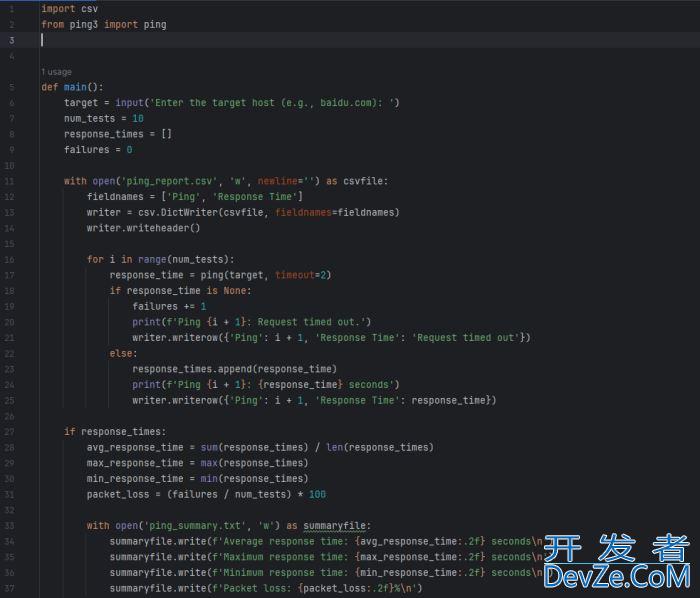

运行后响应:
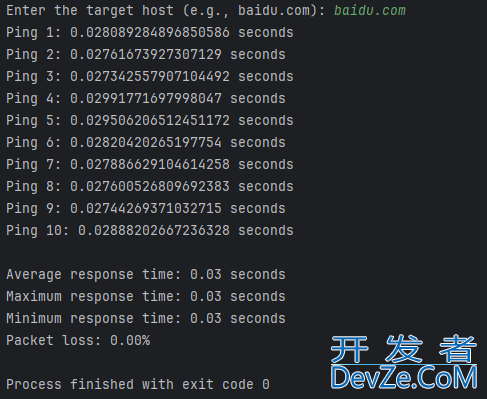
额外生成了两个文件:


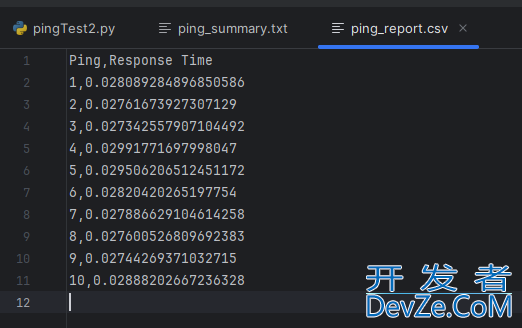
以上就是使用Python进行Ping测试的操作php指南的详细内容,更多关于Python Ping测试的资料请关注编程客栈(www.devze.com)其它相关文章!
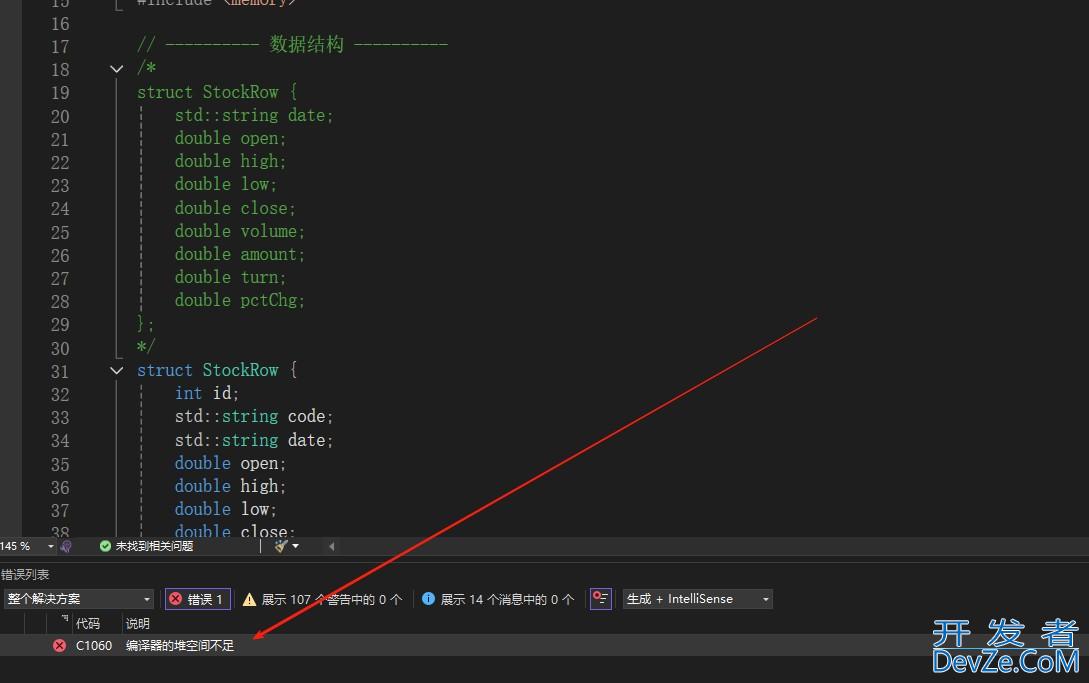





 加载中,请稍侯......
加载中,请稍侯......
精彩评论